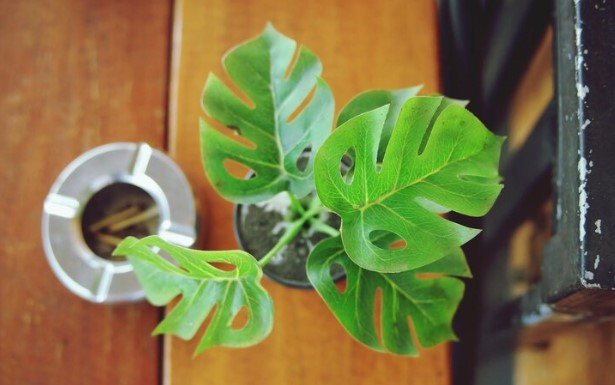Philodendron Brasil: A Guide to Care,Growth and Benefits
Philodendron Brasil:A Guide to Care,Growth and Benefits Philodendron Brasil, one of the most visually striking houseplants, is a favorite among factory suckers. Its vibrant green and lime- unheroic variegated leaves make it a pleasurable addition to any inner space. Not only is it visually appealing, but it’s also incredibly low– conservation, making it perfect for both newcomers and seasoned gardeners. In this companion, you’ll learn all about Philodendron Basil, including care tips, ornamental uses, and common troubleshooting styles. Physical Features of Philodendron Brasil The Philodendron Basil is known for its uniquely decorated, heart– molded leaves. Its striking discrepancy of dark green and neon- unheroic patterns is truly mesmerizing. The factory grows as a running or climbing vine, making it ideal for hanging baskets or as a ornamental statement piece on shelves. Its lustrous leaves reflect light beautifully, adding a touch of fineness to any room. Ideal Growing Conditions To insure healthy growth, Philodendron Brasil thrives in bright, circular sun. Although it can acclimatize to low light, its variegation may fade under these conditions. Aim to maintain temperatures between 65 °F to 80 °F for optimal growth. also, this factory prefers a sticky terrain, mimicking its tropical origins. Using a humidifier or befogging its leaves regularly can help achieve the asked moisture situations. How to watch for Philodendron Brasil Caring for Philodendron Basil is simple and freshman–friendly. Water the factory when the top inch of the soil feels dry to the touch. Overwatering can lead to root spoilage, so always insure proper drainage. The factory thrives in well– draining soil, similar as a blend of regular replanting soil and perlite, which supports healthy root growth. Fertilization Needs Philodendron Basil grows best when fed with a balanced liquid toxin every 4- 6 weeks during spring and summer. Be sure to adulterate the toxin to half strength to help root burn. Avoid fertilizing in downtime, as the factory enters a dormant phase and requires lower aliment during this time. Overfeeding can lead to swab figure– up in the soil, which may harm the roots. Common Pests and conditions Like utmost houseplants, Philodendron Basil is susceptible to common pests and conditions. Spider diminutives, mealybugs, and scale insects are the most frequent raiders. Use insecticidal cleaner or neem oil painting to control these pests effectively. Overwatering can lead to fungal infections, causing root spoilage or splint spots. To help these problems, maintain proper watering practices and insure good air rotation. Propagating Philodendron Brasil Propagating Philodendron Brasil is an instigative way to grow new shops. Begin by cutting a healthy stem just below a knot. Place the slice in water or wettish soil, icing at least one knot is submerged for root development. Keep the slice in a warm, bright spot with circular sun. After roots develop in a many weeks, you can transfer it to a new pot with fresh soil. Ornamental Uses of Philodendron Brasil Philodendron Brasil is a protean factory that enhances any home décor. Use it in hanging baskets to produce a slinging effect or let its vines trail from a shelf for a capricious touch. It dyads beautifully with other houseplants like pothos or ferns for a lush, jungle- suchlike aesthetic. This factory’s vibrant colors can round both ultramodern and bohemian design styles. Philodendron Brasil vs. Other Varieties Feature Philodendron Brasil Philodendron Micans Leaf Color Green with yellow variegation Velvet-like dark green Texture Glossy, smooth leaves Soft, velvety leaves Growth Habit Trailing vine Trailing vine Light Needs Indirect light Medium light Philodendron Brasil stands out for its bright, bold appearance, while Micans offers a more subdued, velvety texture. Both are low-maintenance and equally beautiful in indoor settings. Benefits of Having Philodendron Brasil at Home Air Purification Philodendron Basil is known to filter dangerous poisons like formaldehyde, making inner air cleanser and healthier. Aesthetic Appeal Its vibrant, variegated leaves buck up up any room, creating a stimulating and lively air. Stress Relief minding for shops like Philodendron Basil can reduce stress and ameliorate overall internal well– being. Troubleshooting Common Problems Unheroic Leaves Yellowing frequently indicates overwatering. Allow the soil to dry out between watering to resolve this issue. Brown Edges This can be a sign of low moisture or underwatering. Increase moisture or water the factory more constantly. Leggy Growth If the factory becomes meager or leggy, it may not be getting enough light. Move it to a brighter position with circular sun. Repotting Philodendron Brasil Repotting your Philodendron Brasil is necessary to ensure healthy growth. Do this every 1- 2 times or when you notice roots growing out of the drainage holes. Use a pot slightly larger than the current bone and fresh, nutrient-rich soil. Repotting during the spring or summer ensures the factory adjusts better to its new terrain. Philodendron Brasil and faves While Philodendron Brasil is a stunning addition to your home, it’s important to note that it’s poisonous to pets.However, it can beget symptoms like drooling, puking, If ingested. To keep your faves safe, place the factory on high shelves or in hanging baskets, out of their reach. Seasonal Care Tips Seasonal changes affect how you watch for Philodendron Brasil. In summer, water more constantly as the soil dries out briskly. During downtime, reduce watering and keep the factory down from cold drafts. Use a humidifier to maintain harmonious moisture situations, especially when inner heating makes the air sot. Conclusion Philodendron Brasil is a protean, low– conservation houseplant that combines beauty and ease of care, making it a favorite among factory suckers. Its stunning variegated leaves and adaptable growth habit make it a awful addition to any inner space, whether in hanging baskets, pots, or climbing casinos. By furnishing the right balance of light, water, and moisture, you can enjoy a healthy and thriving Philodendron Basil time– round. Not only does it enhance the aesthetic of your home, but it also offers air– purifying benefits and a comforting presence. Whether you’re a freshman or an educated gardener, this tropical beauty is a must- have in your inner … Read more


